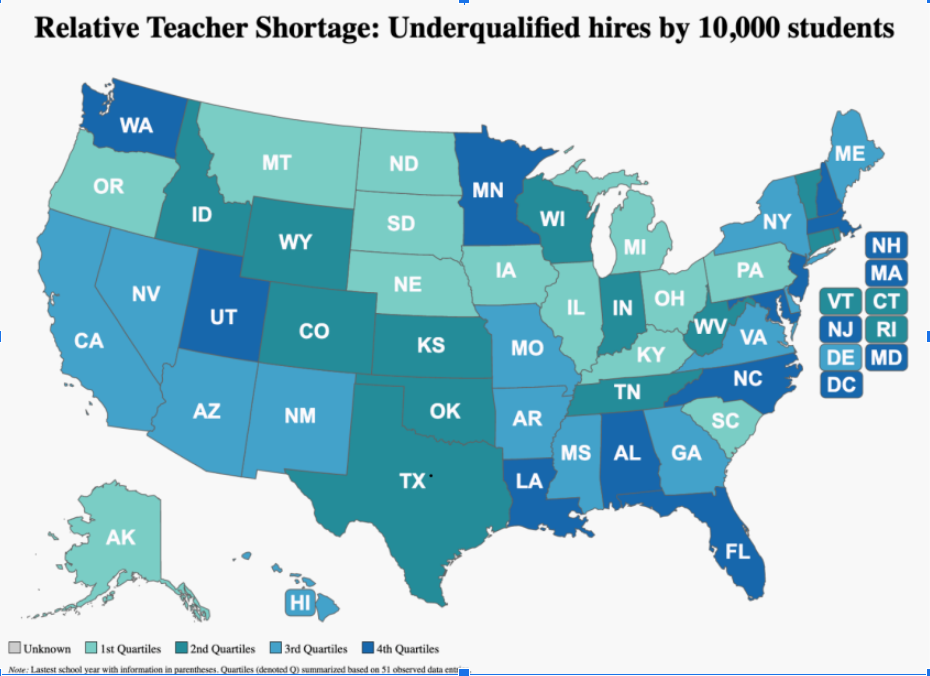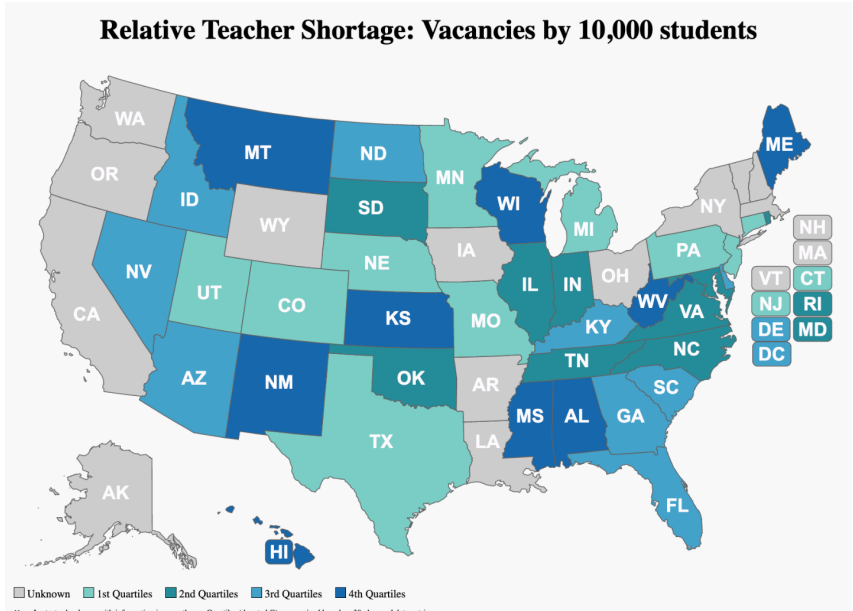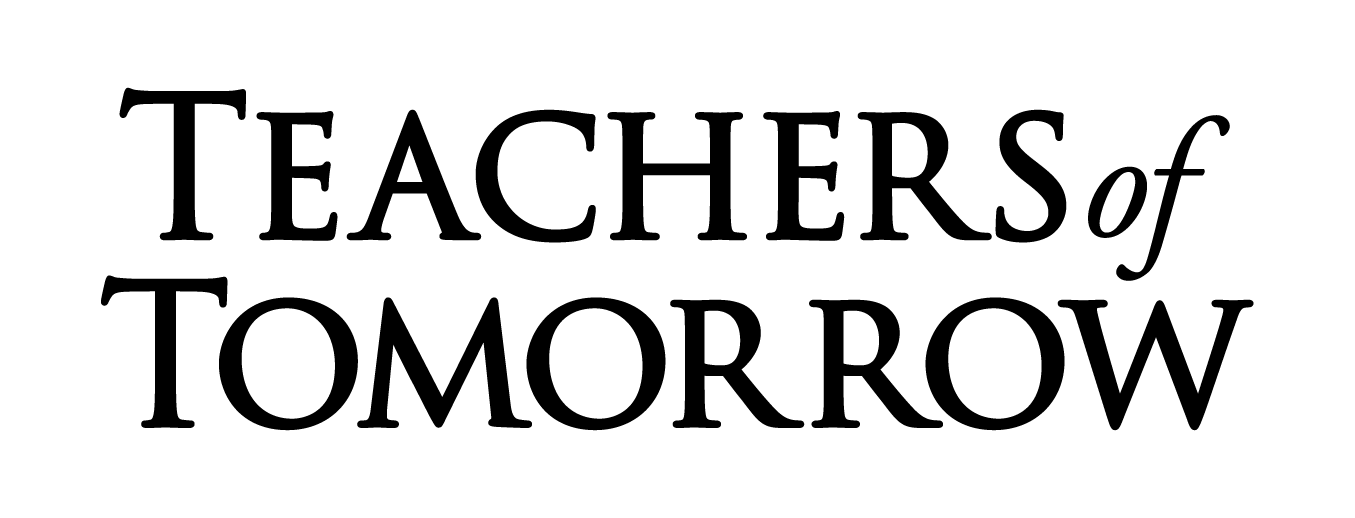Teacher shortages have become a critical issue across the United States. According to a 2022 report by the U.S. Department of Education, 41 states and D.C. are facing shortages in at least one subject area or grade level. The COVID-19 pandemic worsened the teacher shortage situation—necessitating immediate action to address the growing crisis in the education sector.
The U.S. Department of Education defines teacher shortage in 3 ways:
- Unfilled positions
- Positions filled by under-qualified teachers
- Positions filled by teachers in a different subject than their certification
Studies place the current teacher shortage at 55,000 vacant positions and an additional 270,000 teaching posts currently filled by underqualified teachers.
Nationwide Challenges
There is debate on whether it’s a national shortage or uneven distribution of teachers. A comprehensive study on teacher shortage by the Annenberg Brown University classifies teacher shortage based on the availability of data on teacher vacancies.
Some states have clear teacher vacancy data. E.g., at the time of the study, states with the highest vacancies include Florida (3,911), Illinois (1,703), and Arizona (1,699). The states with lower vacancies included Utah (37), Missouri (38) and Nebraska (42). Other states like Georgia and Alabama had unclear data, while some states like Massachusetts, Oregon, and Washington lacked actual data on vacancy numbers. This made it difficult for the study to determine the national scope of the teacher shortage problem.

But, even a conservative approach, places the teacher shortage to close to 40,000, signifying the need for an immediate solution. In fact, 86% of public schools struggle to hire educators.
The shortage is particularly acute in STEM fields and foreign languages.
Is there any cause for the perennial teacher shortage? Yes! A survey by NORC at the University of Chicago found only a dismal 18% of Americans would encourage young people to become K-12 teachers.
The study cites low pay, lack of resources, and a stressful work environment as the main demotivators to joining the teaching career. For instance, the average annual salary for teachers in the U.S. was $68,000 as of October 2023, which is 8% less than the average salary for all workers in the country. And, teacher salaries have grown more slowly than pay in other sectors.
Here are different innovative solutions different states are employing to deal with teacher shortages:
Florida- Leading the Nation in Teacher Demand
Florida is at the forefront of the teacher shortage in 2024, with over 5,000 vacancies–the highest demand in the nation.
“Florida is dealing with, if not the worst, one of the worst teacher shortage situations in the nation.” Andrew Spar, President of the Florida Education Association, 2023.
The core issues behind the shortage in Florida include low pay, long hours, and political interference in education.
Despite this, the state does not have the highest number of vacancies per 10,000 students; that distinction goes to West Virginia, with 59 vacancies per 10,000 students, compared to Florida’s nearly 19. The core issues behind the shortage in Florida include low pay, long hours, and political interference in education.
“Teachers are not encouraging other people to become teachers because they know how bad it is,” said Chris Pagel, President of the Nassau Teachers Association.
In a bid to combat the shortage, some school districts in Florida are offering salary increases, signing bonuses, and mentoring programs for new teachers. The state also supports alternative teacher certification programs that get qualified professionals into classrooms quickly.
Texas- Addressing the Shortage with Innovative Solutions
San Antonio is considering a teacher homebuyer incentive program in Texas to retain educators.
The program, spearheaded by District 2 City Councilman Jalen McKee-Rodriguez, aims to provide down payment assistance or a forgivable loan to first-time homebuyer teachers in exchange for a commitment to work in a public school district for a certain period.
The program aims to assist first-time homebuyers who happen to be teachers who purchase a home to understand the issue and develop specific solutions fully.
Once approved, the policy will expand the current homeowner assistance programs to include early childhood teachers, K-12 educators in public schools, and school support staff. The state also encourages the alternative route to teacher certification for career changers who want to transition to education in a bid to bridge the teacher shortage gap.
Kentucky is Facing Critical Proportions
Kentucky’s teacher shortage has reached critical proportions, impacting children’s ability to learn every single day. For example, shortages result in reduced individualized attention and instructional disruptions. Some students also miss learning opportunities through curriculum gaps.
The average starting salary for teachers in the state is $38,010, significantly lower than that of neighboring states like Indiana and Ohio, where average salaries are $60,000 and $77,000, respectively.
Teachers are left with the choice of crossing state lines to earn better or remain in Kentucky and struggle financially. Most of them have crossed to other states, leading to a critical teacher shortage.
Recently, school districts in southern Kentucky, near the Tennessee state line, have been offering better deals to new teachers. Using billboards, they’re advertising the starting salary for teachers as $50,000, signifying a pay increase of $12,000.
Other states bordering Kentucky are also increasing teacher pay. For instance, Arkansas and South Carolina have a starting pay of $50,000 while New Mexico has a starting pay of $52,000.
Ohio- A Need for Accurate Data
Ohio is experiencing a teacher shortage. Between 2010 and 2018, the Center for American Progress reported nearly a 50 percent enrollment decline for teacher preparation programs in Ohio.
The ADPI Research Institute reports a staffing imbalance between the demand and supply of teachers. “The demand for teachers has only grown, but the supply has been very stable,” Nela Richardson, Chief Economist- ADP.
Ohio State lacks data on teacher demand, making it challenging to craft effective solutions. The state needs to collect data on teacher demand and vacancies to understand the full scope of the problem and develop targeted solutions.
One way to solve the Ohio shortage is through alternative teacher certification programs. These programs are designed for individuals with a bachelor’s degree in a subject area, even outside of education, to transition into teaching.
Teachers of Tomorrow is now offering an alternative teacher certification in Ohio. Qualified individuals enter the classroom quicker, while still meeting state certification requirements. We offer all the support necessary to ensure new educators are successful in their new roles.

Solutions and Initiatives to Address the Teacher Shortage
The teacher shortage in the U.S. is a complex challenge that requires multifaceted solutions.
States need to address underlying issues such as low pay, long hours, and political interference in education. We also need better collaboration between states and cities to create targeted initiatives, gather accurate data, and provide competitive salaries to attract and retain educators.
Equally important is ensuring teachers are equipped with the proper training and qualifications. Many states are filling vacancies with uncertified teachers, which can affect student outcomes and increasing one element of teacher shortage.
Programs like alternative certification by Teachers of Tomorrow offer affordable and flexible options for aspiring educators to obtain certification. With these programs, departments of education across the country can be guaranteed that new teachers are adequately prepared to provide instruction and support students’ success.
Only then can we ensure a high-quality education for all students and a promising future for the teaching profession.


